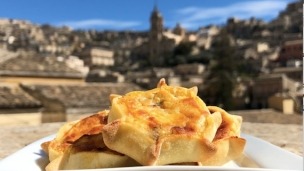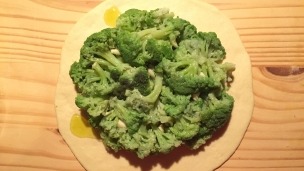Interview with Kate Singleton - Part 2
After a brief interlude to allow loveSicily to participate on IMBB (and boy do we have news about IMBB... but more on that later) we now return to the normal broadcasting schedule with the second part of the interview with the wonderful Sicilian wine connoisseur Kate Singleton (from those who missed the first part just hope over here).
From your book it seems apparent that you had full support from the producers, were you expecting their enthusiasm?
I don't actually think they have been very enthusiastic, at least not at the outset, because they knew nothing about me and my visits took a heavy toll on their time. But once they had decided that I really did want to learn as much as possible about their art and aspirations, they couldn't have been more helpful. News is supposed to travel over the grapevine, isn't it? I increasingly found that people had heard of my oenological peregrinations and were more than willing to introduce me to what they were doing. People were very good to Diego too, offering him hospitality and making him welcome. They must have been so pleased to see what good pictures he takes.
Did you discover anything unexpected?
More than I could possibly relate. I make no claims to being a wine expert, so it was all an amazing process of discovery. The most surprising thing concerning wine was finding an extensive vineyard at 900 metres above sea level on Mount Etna that is submerged under water for four months of the year. Winemakers elsewhere in Sicily - let alone other parts of Italy - refused to believe that vines could survive under such conditions, but I saw them with my own eyes. Moreover, in the early 1900s the water protected the vines from the ravages of phylloxera, so the vineyard survived and the vines never required grafting onto resistant rootstock. The oldest of those vines date back nearly 200 years. That must be unique for Europe.
The other unexpected thing I discovered has nothing to do with wine. The Morgante winery is located near Grotte, in an area of the province of Agrigento that was renowned and exploited for its sulphur mines until the 1980s, when it went into dramatic decline. While most of the towns and villages in the area are poor and despondent, Grotte enjoys a uniquely thriving economy based on the wholesale import of rugs from the Middle East and, even more strangely given the climate, fur coats.
How do current Sicilian wines compare to other wines?
In relation to other Italian regions, Sicily has a greater wealth of native grape varieties, and a wide range of microclimates and soils. Moreover, the region has also shown that it can produce highly distinctive Chardonnays, Cabernet Sauvignons, Syrahs, Viogniers, so it has a great deal to offer. If producers manage to keep up the quality, maintain their individuality and not go over the top price wise, I reckon that they have an edge over other regions. People tend to say, 'Oh yes, Sicilian wines, good but overly muscular', whereas in reality there are wines of many different sorts, ranging from strong, fruity wines from the west coast to subtle, structured wines grown at high altitudes on Etna, or indeed the elegance of a Cerasuolo di Vittoria.
What would your favourite line up be for a vertical tasting of Sicilian wine?
Lots of the estates now making good wines in Sicily haven't been there for long enough to set up a significant vertical tasting. Of those that have, my choice would be Planeta or Tasca d'Almerita.
In your opinion, what is the absolutely 'can’t miss' Sicilian food and wine combination?
That's not easy. But if I were to choose a truly delicious classic like Pasta con le sarde (Pasta with sardines), I might want to go for Benanti's Pietramarina, which is a 100% Carricante Etna Bianco with sufficient intensity of fruit, acidity and aromatic persistence to balance a dish that marries savoury and sweet so perfectly.
And what about a match of local sweets and dessert wine?
I can imagine the Buffa Marsala Vergine going very well with the Antica Dolceria's impanatiggi, which are pastry envelopes stuffed with aubergine or meat mixed with chocolate. However, by and large I reckon many of Sicily's most interesting dessert wines actually go best with seasoned cheeses. For example, the Barone la Lumia Nikao, which is a late harvested Nero d'Avola made as a raisin wine: initially velvety sweet and fruity, then curiously dry and spicy on the finish.
Naturally, one often thinks about Sicilian wine in connection to Sicilian food, what do you think is the place of Sicilian wines matched to other types of cuisine?
The potential is unlimited, not least because the range is so wide.
We focus mostly on the South East of Sicily in this website, how do you think the Cerasuolo di Vittoria or the Moscato di Noto compare respectively to other red and sweet Sicilian wines?
A good Cerasuolo di Vittoria is one of my favourite wines. I love the fact that it is lighter, less imposing, yet has plenty of character and an elegant structure. It's a good red for summer drinking, and can even accompany certain types of fish, for instance pesce spada. The musical equivalent of Cerasuolo di Vittoria is a minuet, whereas the Nero d'Avola is more of a symphony.
As for the Moscato di Noto, I think it's early days to make comparisons. Output was so low until very recently that when Planeta invested in new vineyards and cellars in the area they found themselves practically reinventing the wine. They weren't hidebound by precedent because this had lost its ties with the present. Alessio Planeta has told me that the wine he is aiming to produce should not be overly sweet, which means that the grapes will be harvested when they still have some acidity. It sounds very interesting, and I look forward to sampling and comparing their Moscato di Noto over the coming years. A similar process of rediscovery has taken place in recent years with the Moscato di Siracusa, which Nino Pupillo has saved from oblivion, with wonderful results.
Nero d'Avola is the fashionable Sicilian wine of the moment and it is the easiest to find also abroad. Is there space for other varieties to follow this success? And what other wine do you think deserve more recognition and appreciation?
Cerasuolo di Vittoria as a DOC, and Grillo as a grape variety.
As Sicilian wines get more widely known and demand grows, do you see a risk of returning to culture of quantity over quality?
No, but I do think it's important not to let the prices soar excessively, as they have in Tuscany. A few very famous wines can command exorbitant prices and will always find buyers, but for the most part ordinary, discerning drinkers want to enjoy interesting wines without bankrupting themselves.
What is the future for Sicilian wine?
Good, I think, especially as tourism increases and people elsewhere in Italy and abroad come to realize that the island transcends all the obvious, uninformed perceptions of the place. As more people get interested in Sicily, however, I can imagine that Sicilian winemakers may have to make a concerted effort to give their products greater collective recognisability. At present the image is highly individualistic and rather dispersive. There's lots of talk about Nero d'Avola, but the grape variety produces different wines in different areas of the island. In this sense Sicily is a continent more than an island. There are lots of Sicilian DOCs, but few of them are easily identifiable from the outside, and anyway most wineries have opted for the greater freedom of IGTs, which are not beset in the same way with norms and rules. The result is myriad wines, many of them excellent, but altogether a confusing profusion for the consumer. The Cantina Settesoli at Menfi has set out in the right direction by distributing good wines at affordable prices using labels and names specially devised for markets abroad.
On a broader scale, one idea might be to go for a dual system, promoting the few DOCs that have a distinct identity (Cerasuolo di Vittoria, Etna Rosso and Bianco, Marsala, Malvasia delle Lipari, Passito di Pantelleria, even Alcamo Bianco, if the few producers making really excellent examples of the appellation can somehow detach themselves from the supermarket plonk image, etc), and identifiable geographical areas within the region (the west coast, Etna, Palermo, etc)... It needs some thought and coordination, I would imagine. But it's all very promising.
Once more thanks you Kate, for a wonderful inside into Sicily, your experience of Sicily and Siclian wines











